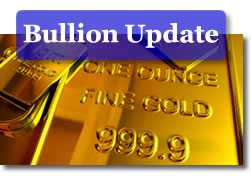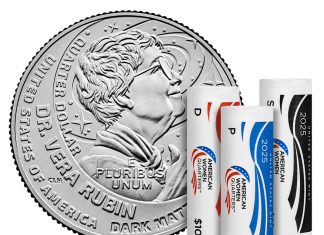 Good Morning,
Good Morning,
The subtle language change that the Fed injected into its post-meeting statement unleashed a torrent of dollar sellers and additional gold buying in the ensuing afternoon and overnight hours.
The mere mention of ‘preparedness’ as regards additional accommodation (likely in the form of bond purchases), even if made conditional upon the US economy showing signs that it clearly needs it, was more than sufficient for the throngs of bettors to bet the way they have.
The Fed exhibited a continuing obsession with deflation and the need to avoid falling into that spiral at all costs. However, such preoccupation was actually wrapped in language that alluded to inflation running at ‘levels somewhat below the Fed’s mandate to promote maximum employment and price stability.’
Translation: while everyone is piling into inflation-mitigating assets, the clear and present danger is being posed by the inverse of that phenomenon. The Fed would like nearly 2% inflation, yet the economy has offered just 0.9% over the past year (to wit, the Japan-style talk of ‘desirable levels of inflation’ and how to bring them about).
Whether or not one thereby needs to utterly skew a portfolio as if multiples of that yet-to-be-felt 2% inflation level were manifest, is, of course, another story entirely. This, however, is the present flavor of market betting. Speculation, thy new name is ‘overreaction.’ Happened in 1980, too. Until 1982 came around.
At the end of the day, the Bernanke anti-deflation campaign is based on some serious ‘external’ field experience (see Japan) and not just on his intense personal focus on the myriad causes the engendered the Great Depression. Chief among such perceived catalysts for the huge contraction of the early ’30s was the Fed’s apparent reduction of the money supply.
Well, there is a way to take care of that misstep; behold the Fed’s actions since the fall of 2007. However, lest we believe that Mr. B has some kind of ‘carte blanche’ to do any of what might be done (and ‘might’ needs to be stressed emphatically), consider that his team is not offering him quite nearly the full cooperation that many believe is critical.
From the very text of the Fed statement, a glimpse into continuing dissent by one of Mr. B’s own team members:
"Voting against the policy was Thomas M. Hoenig, who judged that the economy continues to recover at a moderate pace. Accordingly, he believed that continuing to express the expectation of exceptionally low levels of the federal funds rate for an extended period was no longer warranted and will lead to future imbalances that undermine stable long-run growth. In addition, given economic and financial conditions, Mr. Hoenig did not believe that continuing to reinvest principal payments from its securities holdings was required to support the Committee’s policy objectives." Six such objections later, Mr. Hoenig is still not quite being heard clearly.
With no one at all seeing any adverse conditions that might derail the exponentially growing mountain of longs in bullion, institutional sources rushed ahead of each other to raise their gold forecasts overnight. Meanwhile, the yellow metal took cues from a US dollar that dipped under the 80-mark on the index and climbed to within four dollars of the next century mark on the price scale.
As expected, while the futures and options players were out raving following the Fed, Indian buying withered some more. The growing availability of bullion bars made from scrapped gold tilted the local spot market towards a larger discount and further ate into primary dealers’ bullion sales.
“I am hearing of a discount of about 5,000 rupees (per kg) in Chennai spot market, which is affecting our sales” said a bullion dealer from a state-run bank’s trading desk overnight.
Similar trends are underway in Thailand and Indonesia as the core market is struggling amid the maelstrom brought on by the spec funds and their millions.
Meanwhile back at the US ranch, White House economic advisor Larry Summers will be leaving his post by year’s end. Not the most market-friendly development, this.
The Huffington Post sees that "Larry Summers is to a large extent responsible for the administration’s inadequate answers to the economic problem. Summers underestimated the depth of the economic crisis and he did not underestimate it accidentally.”
The HP adds that:
"He underestimated it because his view of the world is very Wall Street-centric, so once they had saved Wall Street, they thought everything else would follow naturally. And the fact that the two economies, Main Street and Wall Street, de-coupled, was not on his radar screen." Most bets regarding Mr. Summers’ eventual replacement are clustering around the idea that he or she will be a corporate executive with hands-on experience in job creation. At the White House, the new slogan might be "Jobs are Job Number One."
The Obama White House might actually have some luck with that task, at least if one economic soothsayer proves correct once again. Singapore-based economist Thomas Lam wants to be heard. Mr. Lam correctly (and precisely) called the end of the worst U.S. recession since the Great Depression roughly sixteen months ago.
In Mr. Lam’s view, US economic growth will average between 2 percent and 2.5 percent in the next few quarters, and while he says he is still gauging jobless claims for his analyses, he is now also "focused on a proprietary leading index that gauges implied risk premiums and future expected yields."
As of now, Mr. Lam also says that the chance of a double-dip event for 2011 is to be estimated at no more than 20 percent. Mr. Lam — ranked as the number two best economic forecaster by Bloomberg — also says that "there is "an empirical tug-of-war going on right now" between analysts and investors trying to fathom whether another recession is likely."
Indeed, look no further for evidence of such a war, than to gold’s behavior in the twenty-four months following its deflation-tinged decline to the $680s during the summer of 2008.
All of the above bring us to the midweek precious metals sessions’ opening in New York, minutes ago. Against a backdrop of a further half-percent easing in the US dollar (down 0.39 to 79.86 on the index) the spot gold market opened with a $7.40 gain and was quoted at $1,294.00 on the bid side. Few doubt the achievement of the $1,300.00 offer price in coming hours; however the question being asked with increasing frequency is: "What’s next?" The metal has added some $140 without any effective pause over recent weeks. The search for additional fuel to keep this wagon in motion is now on, as the half-life of the Fed statement ticks away.
Silver opened with a six-cent gain at one penny above the $21.00 mark on the bid side this morning. The white metal shows a $3+ gain over the past month. Platinum, which also gained more than $125 in a near-vertical climb of late, added another $11 to values as it opened at $1,630.00 the ounce. Palladium rose $5 to $538.00 and it now sports a roughly $90 gain over the past 60 days or so. Rhodium remained steady at $2,300.00 basis the bid quote. Thus far, paper profits appear to suit the funds playing in all of the metals, just fine.
Until tomorrow (and a new record),
Jon Nadler
Senior Analyst
Kitco Metals Inc.
North America
www.kitco.com and www.kitco.cn
Blog: http://www.kitco.com/ind/index.html#nadler
Original article link: Summers’ Time But The Leaving Ain’t Easy











gold will pass $1,300.00 easily. $1,375.00 this year. $1,650.00 next year.